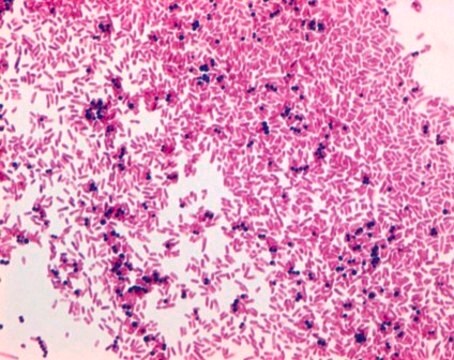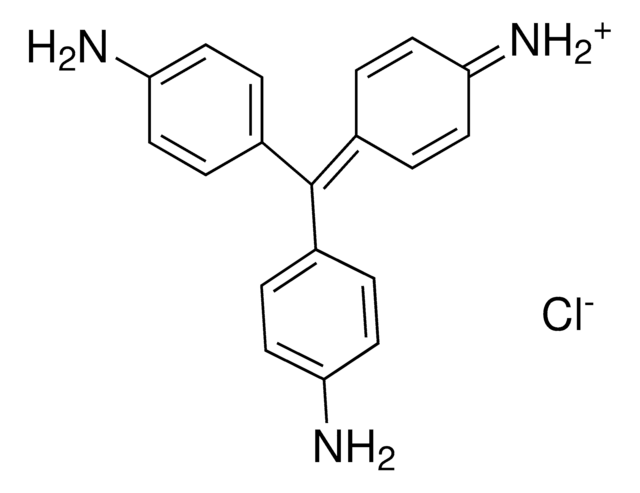75482
Gram′s decolorizer solution
for Gram staining
Synonym(s):
Acetone ethanol mixture
About This Item
Quality Level
form
liquid
technique(s)
microbe id | staining: suitable
refractive index
n20/D 1.361
density
0.80 g/mL at 20 °C
antibiotic activity spectrum
Gram-negative bacteria
Gram-positive bacteria
application(s)
diagnostic assay manufacturing
hematology
histology
storage temp.
room temp
General description
Application
Signal Word
Danger
Hazard Statements
Precautionary Statements
Hazard Classifications
Eye Irrit. 2 - Flam. Liq. 2 - STOT SE 3
Target Organs
Central nervous system
Supplementary Hazards
Storage Class Code
3 - Flammable liquids
WGK
WGK 1
Flash Point(F)
68.0 °F
Flash Point(C)
20 °C
Personal Protective Equipment
Choose from one of the most recent versions:
Already Own This Product?
Find documentation for the products that you have recently purchased in the Document Library.
Customers Also Viewed
Articles
Clostridia are relatively large, gram-positive, rod-shaped bacteria that can undergo only anaerobic metabolism.
An article regarding the Role of Clostridium perfringens and their detection, identification, and differentiation from Sigma-Aldrich.com
On the Trail of Campylobacter - The Campylobacter is one of the leading causes of human gastroenteritis. Common Campylobacter species C. jejuni, C. coli, and C. lari are responsible for most cases of campylobacteriosis. However, other species, like C. fetus, which causes spontaneous abortions, have also been associated with human illness. Campylobacter are Gram-negative, spiral-shaped, microaerophilic and motile bacteria with uni- or bi-polar fl agella
For microbiologists the most fundamental stain was developed in 1884 by the Danish bacteriologist Hans Christian Gram.
Our team of scientists has experience in all areas of research including Life Science, Material Science, Chemical Synthesis, Chromatography, Analytical and many others.
Contact Technical Service



